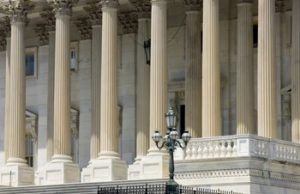
Supreme Court Justice: Roger B. Taney
Roger B. Taney was the fifth Chief Justice in the Supreme Court between 1836 till his death in 1864. He was born on March 17, 1777 and received a basic education from many private tutors. Roger B. Taney entered Dickinson College at the age of 15 and graduated in 1795 with honors. Afterwards, he read law and in 1799 was admitted to the bar. Afterwards, he quickly became known as one of the most promising young lawyers in Maryland.
Roger B. Taney was nominated for the position of Associate Justice in January 1835 by President Jackson. He was confirmed for the seat on March 15, 1836, and was given his commission on the same day. As a judge, Roger B. Taney often favored the power of the individual states. In many cases regarding the Commerce Clause worked to create a more nuanced way of accommodating competing state and federal claims of regulatory power, while more often leaning toward the states.
Famous Cases
Dred Scott v. Sandford (1857): A Supreme Court Case also known as the Dred Scott Decision, where the ruling by the court said that individuals African descent that were brought into the United States and kept as slaves, or the slaves’ descendants, were not protected by the United States Constitution and would never be considered U.S. citizens.
Chief Justice Roger B. Taney wrote the extremely controversial opinion that resulted from the 7-2 vote of the court. This was the first case since Marbury v. Madison where the Supreme Court decided that an act of Congress was unconstitutional. The opinion first began by concluding that the Supreme Court lacked the proper jurisdiction in the issue because Dred Scott did not have standing to sue in this court. The court continued on with the highly criticized action of concluding that Congress did not have the proper authority to illegalize slavery in federal territories and that, since slaves were not considered citizens, they did not have the right to sue in court. Chief Justice Roger B. Taney went even further by ruling that like chattels or private property, slaves could not be taken from their rightful owners without due process.
While Justice Robert B. Taney wanted to settle the issue of slavery with Court’s decision, instead the decision had the opposite effect. The Supreme Court’s ruling decision was heavily debated across the country. While the Court’s ruling was never explicitly overruled, the Court later stated in the Slaughter-House Cases that certain sections of the decision had been already overruled in 1868 by the Fourteenth Amendment.
Charles River Bridge v. Warren Bridge (1837): A Supreme Court case regarding the Warren Bridge and Charles River Bridge of Boston that settled a dispute over a clause in the Constitution that discussed the regarding obligation of a contract. The Charles River Bridge Company had been allowed a charter to build a bridge over the Charles River which would connect Boston and Cambridge. When Massachusetts allowed another company to construct the Warren Bridge which would be very close to the first one and would join the same locations, the proprietors the first bridge claimed that the state legislature had violated the contract since it had implied exclusive rights. The Court sided ultimately with second bridge company in a 5-2 decision.
Chief Justice Roger B. Taney wrote in his opinion that the case was strictly about how the contract was interpreted and that the contract in question must be interpreted in a narrow way, meaning that the Charles River Bridge Company did not actually have the exclusive right to build the bridge there. Chief Justice Roger B. Taney went further and pointed out that a contract should be closely interpreted, and if there was any uncertainty, it should be decided by the public.





























